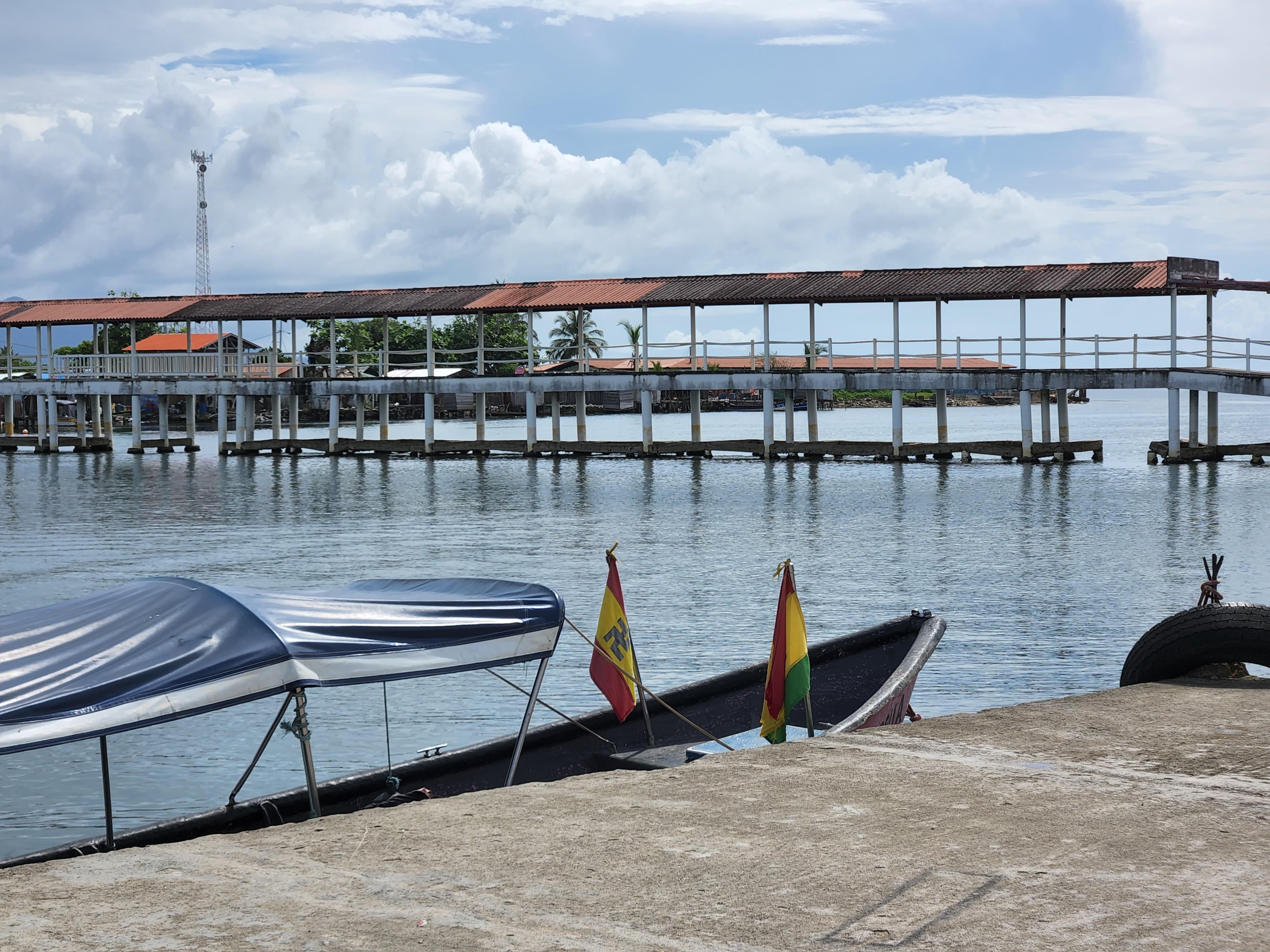We heard a lot about the village and island of Nargana, from the first time we went to San Blas a few months ago. A young man, José, working to clean his family's island of Banedup from the fallen vegetation, explained us that he lived there for three quarters of the year when he was not on this island. He described for us the two islands connected with a bridge and with a shared school and hospital but different village chiefs. José was the first Kuna we could really interact with in a meaningful way. He was speaking Spanish better than the Kuna language as he had grown most of his life in Panama City. His mom, who had since come back to San Blas, was never raised as a traditional Kuna woman with the short hair and the traditional clothing. Maybe that's why we managed to connect with him more than with any other Kuna and had a longer conversation: first, he spoke Spanish but second, we probably had similar social codes...
To give you some context, Kuna Yala or San Blas is a beautiful archipelago in Northern Panama, in the stretch of land between Puerto Lindo (where we were before) and the Colombian border. It is an autonomous region from the stand point of Panama as it is home to the indigenous Kuna people. In short, people have been living there from precolonial times with their own culture, their own way of life and their own language. Panama grants them a semi-independence in governance that conserves their ancestral chiefs, the Silas. The archipelago is composed of hundreds of islands which are textbook paradise with white sand beaches and palm trees, turquoise water and coral reefs: a cruiser's dream, with the added bonus of discovering a new culture through its art and connection with its people.
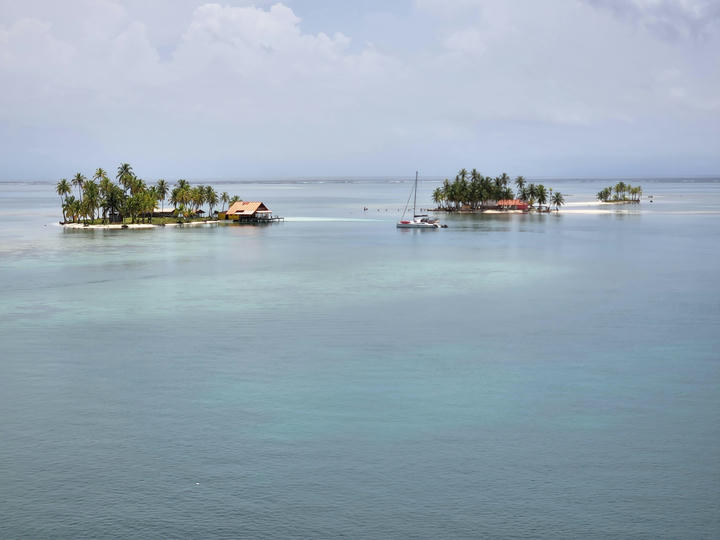
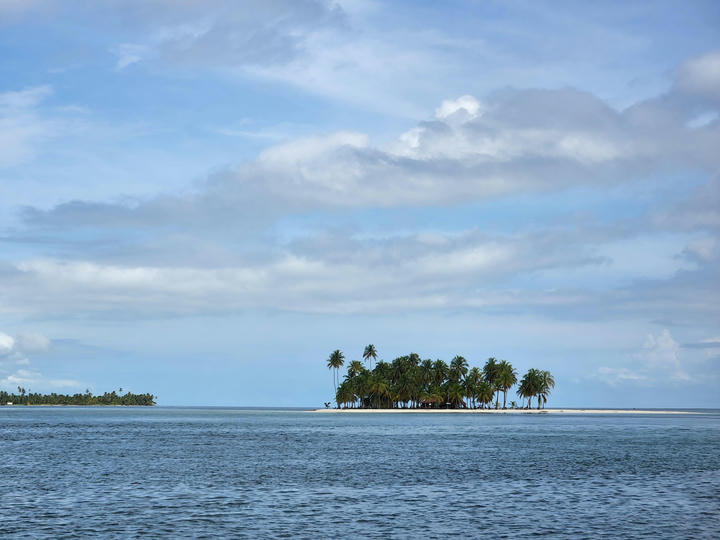
However, when we came with Yalçın's parents a few months ago, we had found it difficult to connect with the Kunas. Sure, there were the mola makers going from boat to boat to sell the hand made multilayered fabrics that Kuna woman sew by hand, there were the veggie boats and Kuna fishermen rafting on the side of your boat, but we found all this very... how to say... very business driven. For instance, even when we didn't buy anything, the fishermen would ask for something in exchange, like an onion, which we had in limited supply, deterred by the high prices of pretty much anything in the food boats. Another time, a boat came and asked for gas. They didn't seem very grateful when we gave them half of our supply and we gad to explain we couldn't give more because we needed some for ourselves too. They gave us three small fish for four people, and that was it. Don't get me wrong, we enjoyed some of these interactions, especially with the mola makers who shared the culture and would also recognize us after several months (they asked about Yalçın's parents), but these kind of interactions was enough for me to start questioning myself deeply. I had been very excited at the idea of meeting people with a culture totally detached from ours, but somehow it felt very hard to connect and I felt more like a source of money than anything else. What was I expecting? And was it the right thing to expect? Could I just show up and expect people to be open to interact when there were many sailboats "invading" their pretty land and when the world inequalities were so pronounced? When my very presence was probably a threat to the long-term survival of their culture? Was I not ready to give enough, used to travel economically and expected people to be overly giving? Or had modern economy perverted every single culture on the globe?
Well, you get it, questioning was going on full throttle! That's where the village of Nargana was coming in the picture, with its les traditional culture. Being a village and less of a tourist spot, and being somehow closer to our Western culture, even if only for the language (there was a Kuna-Spanish school there), we may be able to interact on a deeper level with the Kunas living in this community. That would help us decide, down the line, if we wanted to follow the coast and discover more Kuna communities, in what we heard was the non-touristy Kuna Yala, or if, instead, we would prefer to directly make the jump to Cartagena, Colombia.
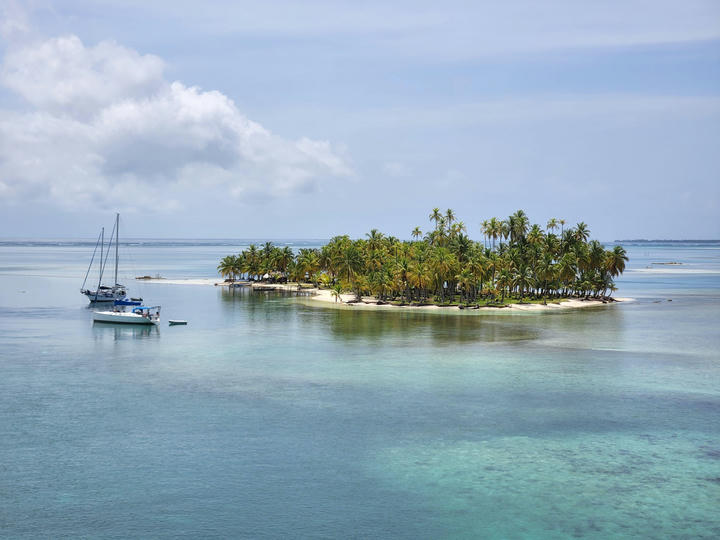
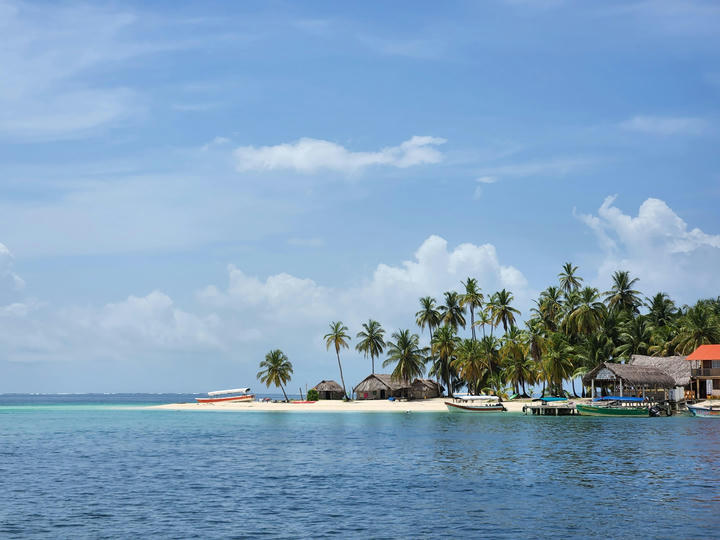
We had arrived in San Blas a few days prior, after a full day of motoring from Puerto Lindo. We had spent an unplugged day in the anchorage of Banedup in the Chichimes Cay (by José's island) that we knew from our previous trip. Being back in a cruising location, as opposed to the crowded and green Puerto Lindo anchorage, felt amazing, despite the place feeling less welcoming with less boats in general and dramatically cloudy skies that light up at night, as customary for the rainy season. We had then moved to another cay, near Green Island, to meet with some friends we had met in Puerto Lindo. The sail there was gorgeous. We took off from a neighboring island that had a sunken ship in shallow waters that I snorkeled for a bit (a lost opportunity during our last trip). Determined to save our diesel, we sailed the light afternoon breeze: downwind course and light winds, that meant... spinnaker! And I had just gone up the mast in the morning to check the rig, so no excuse at all. Hoisting up the colorful sail is always a bliss, if only for the view, but in our case, it also gave an extra 1 knot or 2 if we agreed to sail a little closer to the wind than our course required. We played the game for an hour or so, still knowing that we were making little progress and might have to motor at some point to reach our anchorage in daylight and be able to navigate through the reefs of this unknown cay. Luckily, gray clouds that had developed on our port side soon filled in a more serious wind (at the limit of what you want to read on the anemometer with the kite up) and allowed us to make 6 to 7 knots directly to target. It was borderline fishy but Yalçın at the helm still had good control and we never broached or rounded up. Sadly though, after twenty minutes or so, the "squall" left us with no breeze and a light rain, it was the rainy season after all...
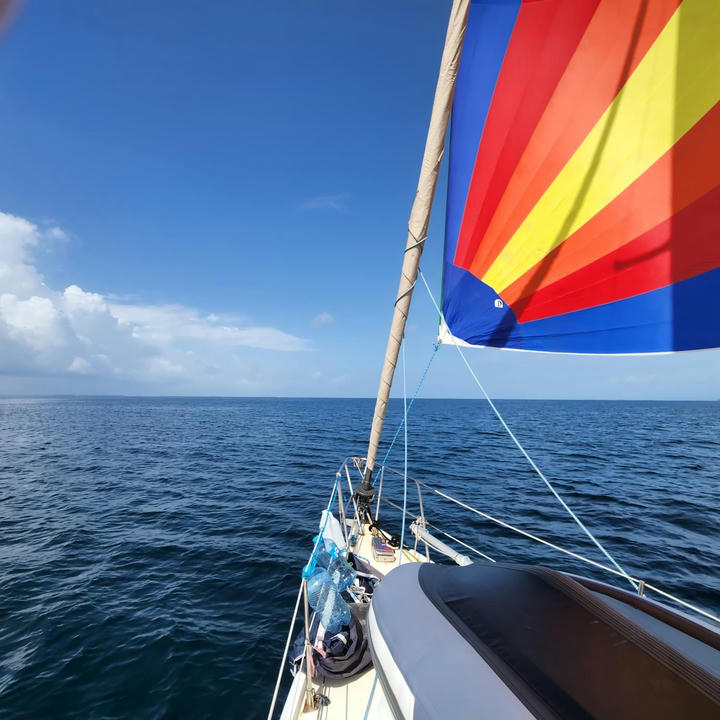
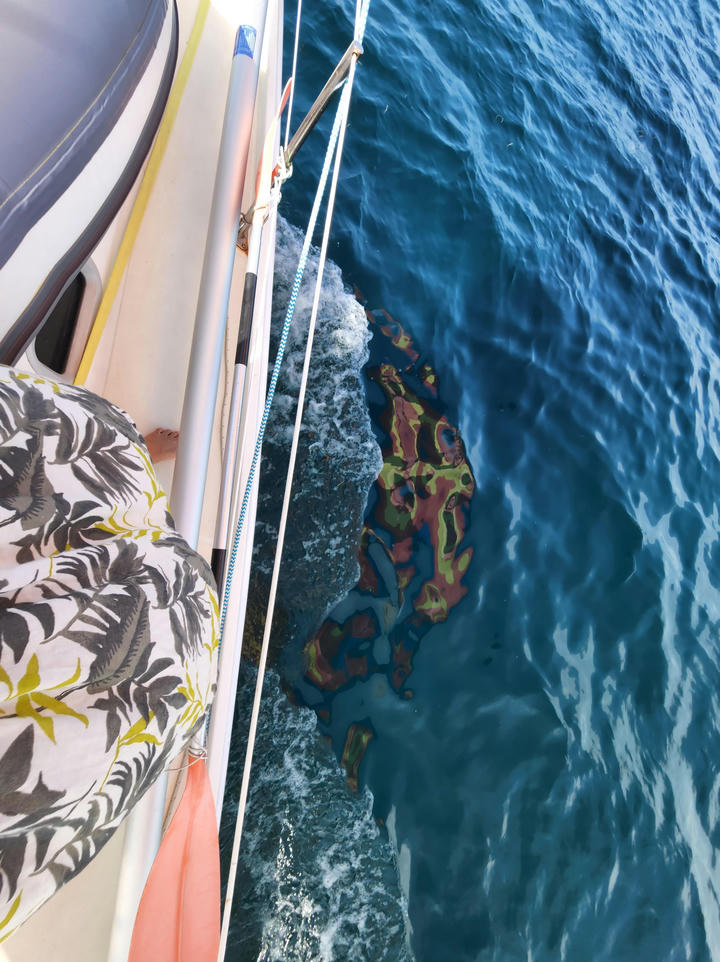
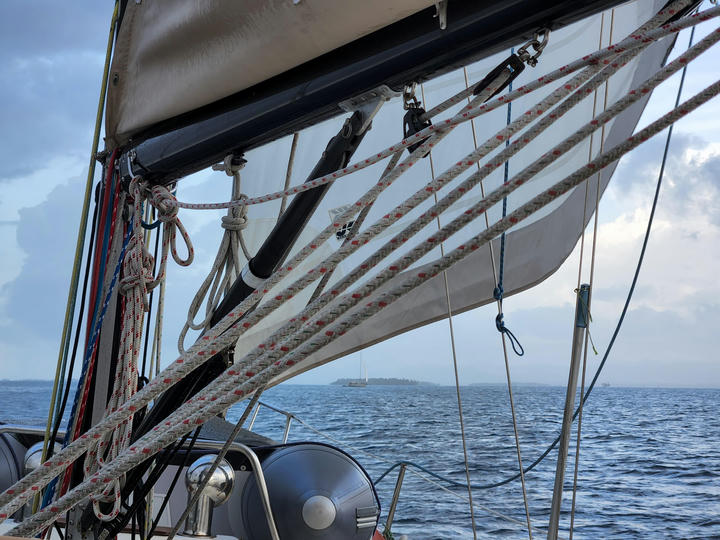
We entered the anchorage at the same time as our friends which allowed us to follow them in. After a few days chilling, with only one (quite nice) snorkeling session, a Hawaiian pizza and a lot of internet (the perk of this anchorage) to report, we decided to move on and check out Nargana. We were curious to see the village as I explained already, but on a more practical note, we wanted to check the stores there and were hoping to find fresh produce. Panama had been going through a food shortage due to blockages at the Costa Rican border and we hadn't been able to stock up as nicely as we would have liked. Rumors were that the roads were about to reopen and assessing our chances to find food would determine how long we could linger, before making the jump to Cartagena. Sonia, our friend, was sure food wouldn't reach this remote region before a day or two and she turned out to be right! But we went nonetheless, eager to check out the village and still hoping for fresh tomatoes!
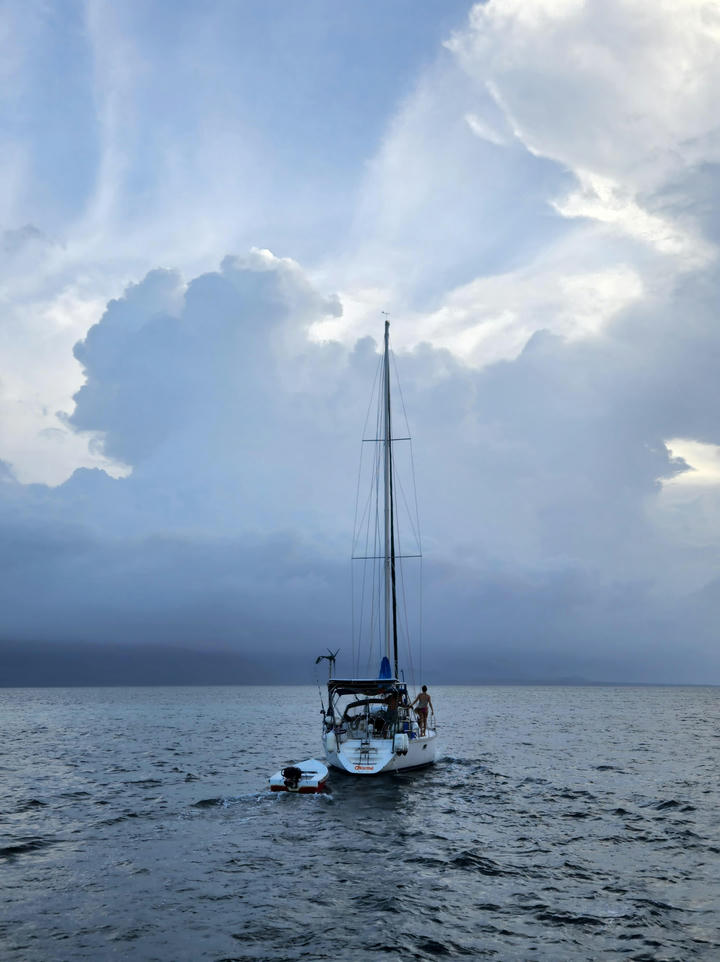
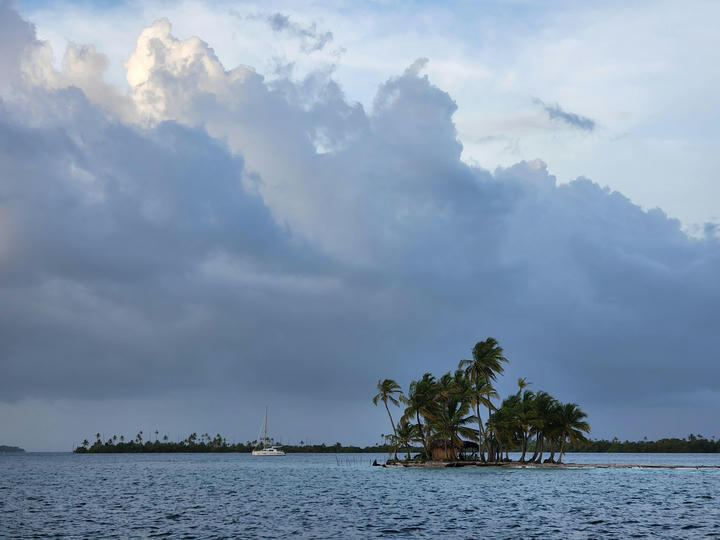
We motored the short way and launched the dinghy after a quick lunch. After figuring out the dinghy dock, we wandered in the car-free sandy streets of the village. Kunas without the traditional culture, will that just end up being poor people? There was a part of that for sure when we saw the plastic waste and huts with a TV dish outside. But yet, the village had a main square and people walking around. It overall seemed peaceful, simple and happy. We checked out the health center, the school, even saw a library, the modern bank and, of course the small stores. As feared, there was not much, but we found a cucumber, eggs and flour for baking and bread-making. One of the shop owner turned out very pleased to learn that Yalçın was Turkish, because, believe it or not, even Kunas in Nargana (like in the rest of Central America we've been so far) watch Turkish telenovela three times a day!! Juliano told us he had a veggie boat scheduled for delivery the next day. We lingered for some time in front of his shop watching the girls of the village playing volley-ball, before crossing the bridge to the other village, Corazon de Jesus.
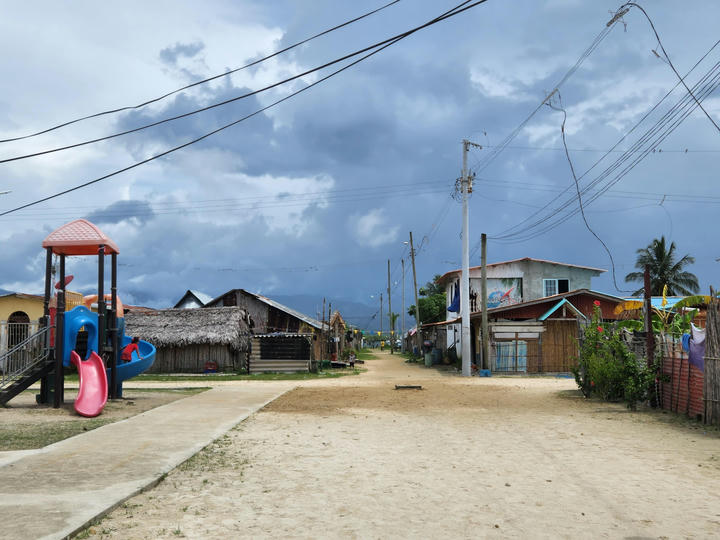
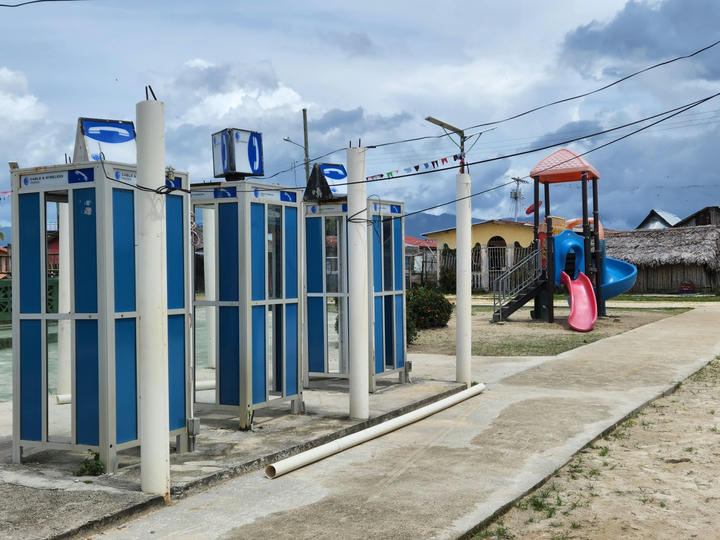
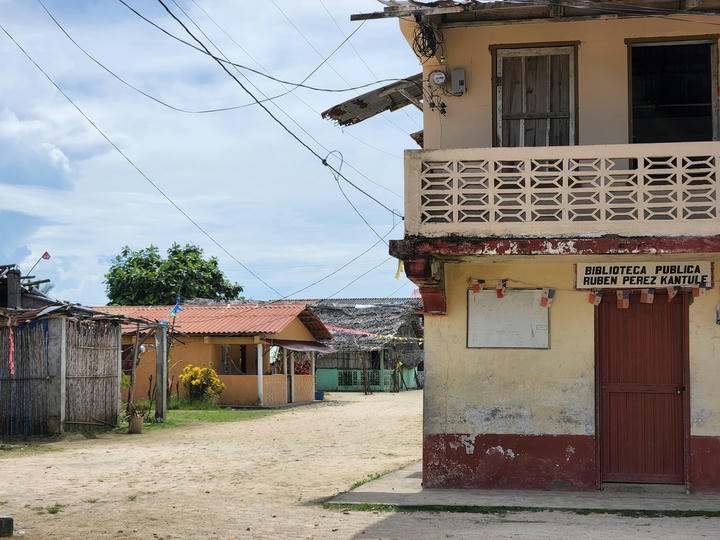
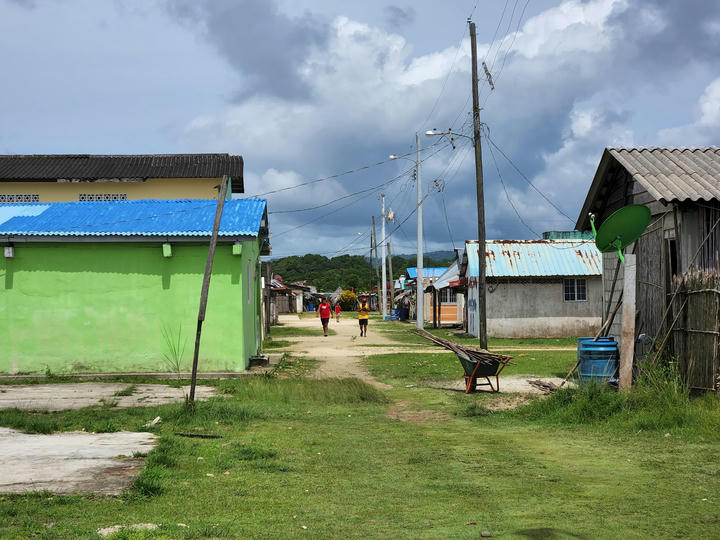
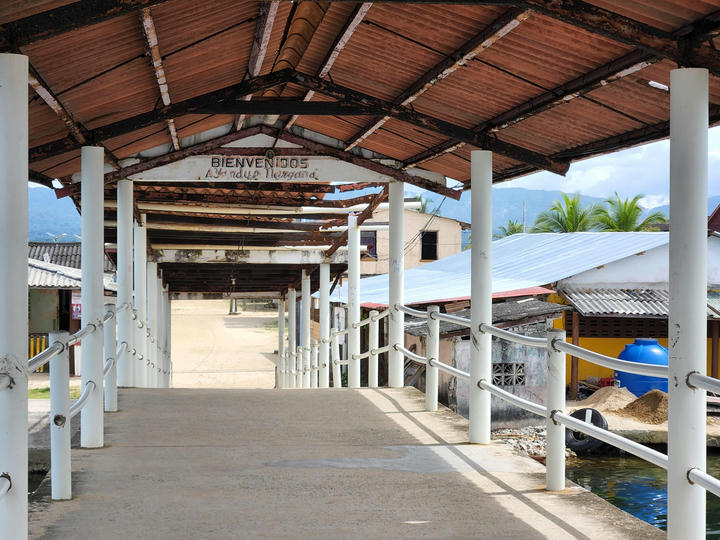
The second village had a little bit of a different vibe, somehow less friendly without being able to pinpoint why. It had the water dock, flags in front of a hut, a basketball field and a religious sculpture on the main square, and a tribunal. We didn't wander as long. People were frequently crossing the bridge from one village to the other. From that point, there was more breeze to dilute the afternoon heat. We looked at the dug out boats slowly row under with their water supply from the nearby river. Here again, it felt peaceful. The houses or huts on the shore had a little other hut directly on the water. We wondered if it was the toilets but later found out in our guide that it was where Kunas raise pigs. We went back and had a cold drinks in the tienda in front of our dinghy and took off. On our way back to the boat, we tried to check the entrance of the river, but the shallow and amount of washed off wood discouraged us from trying it in the morning. One of the perk was to see crocodiles which I wasn't that excited about anyway, nor was Yalçın.

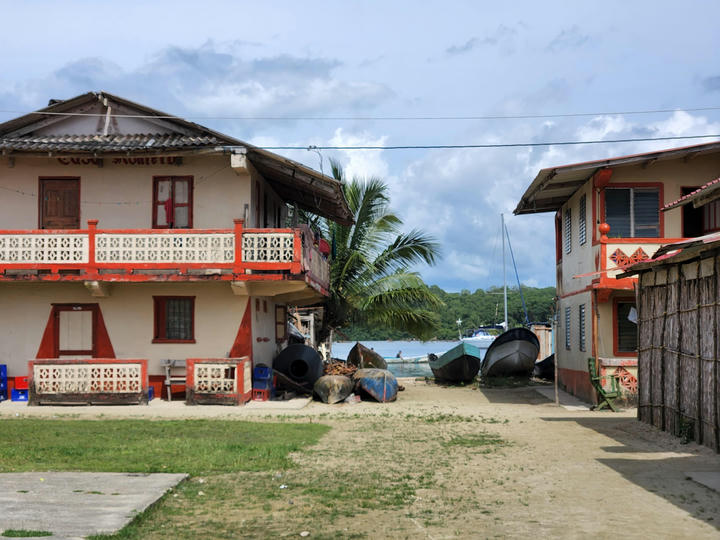
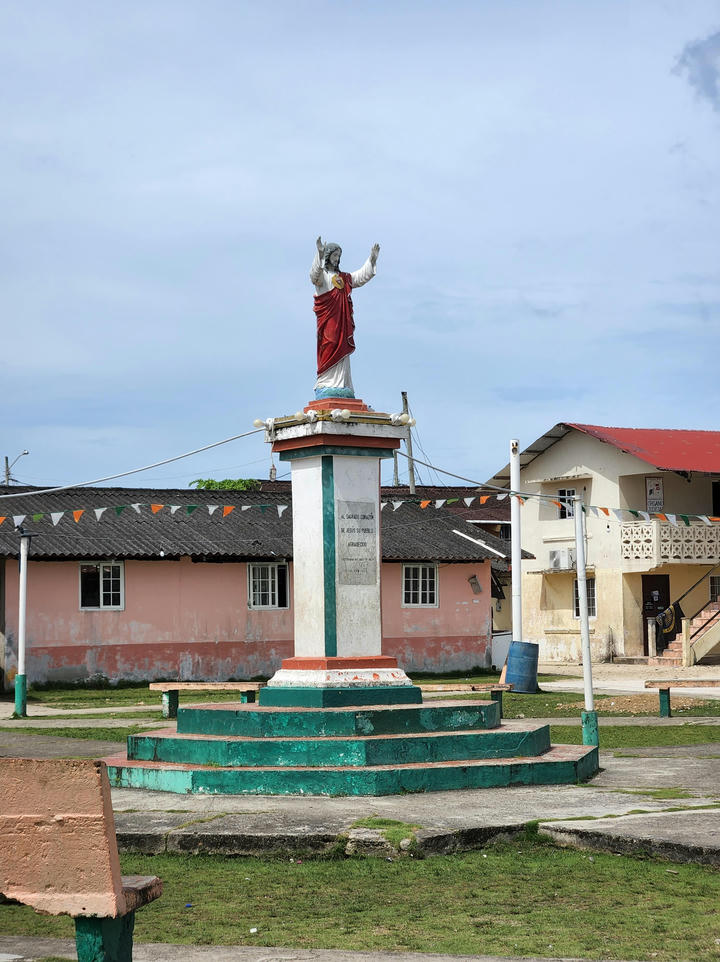
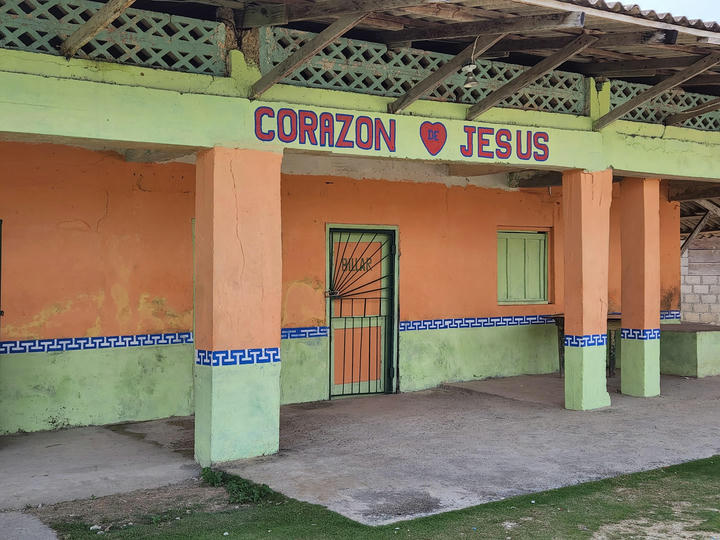
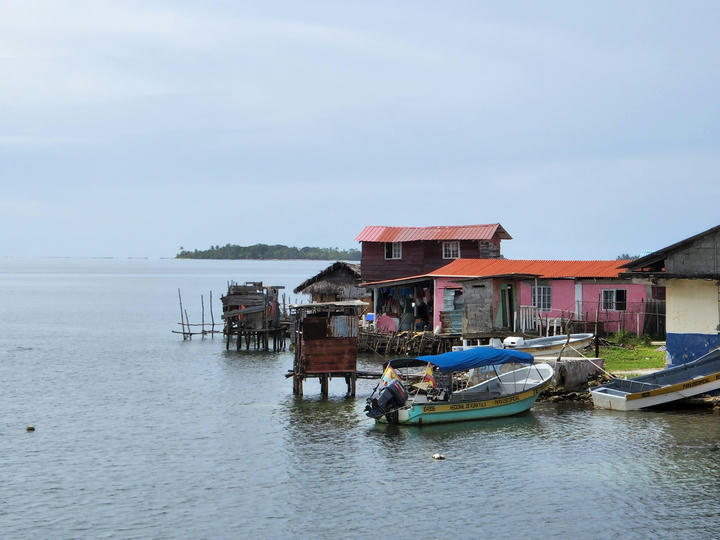
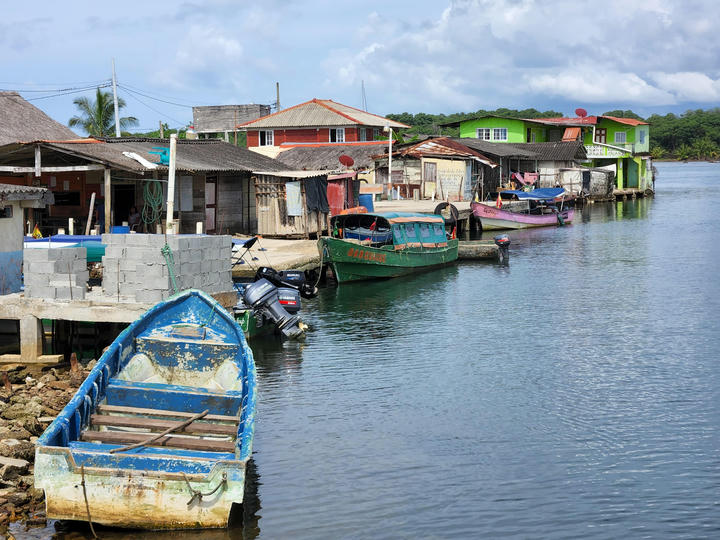
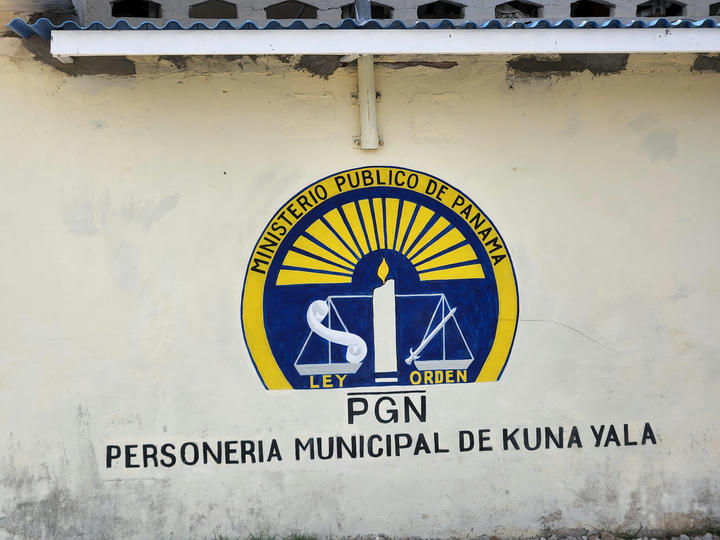
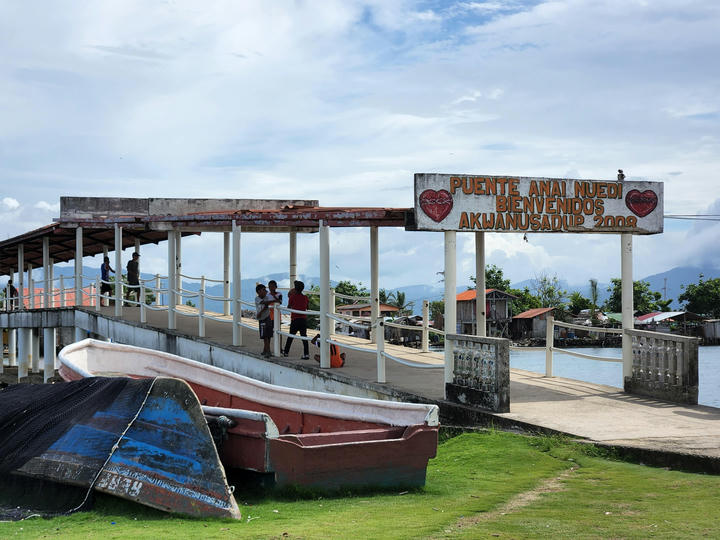
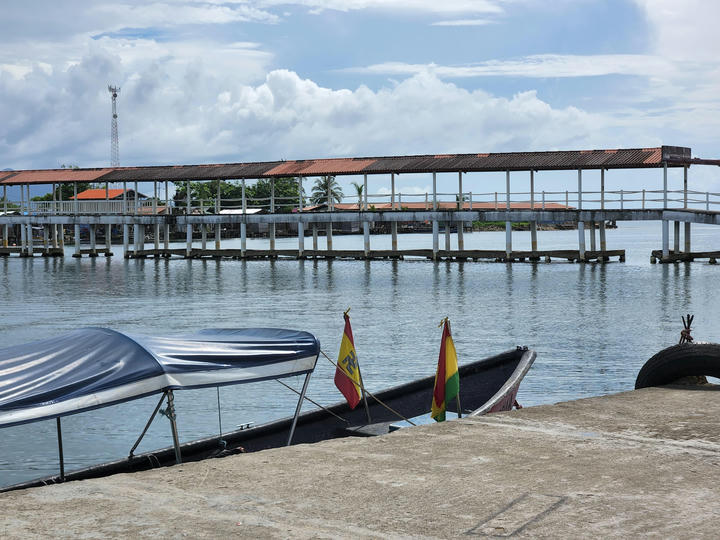
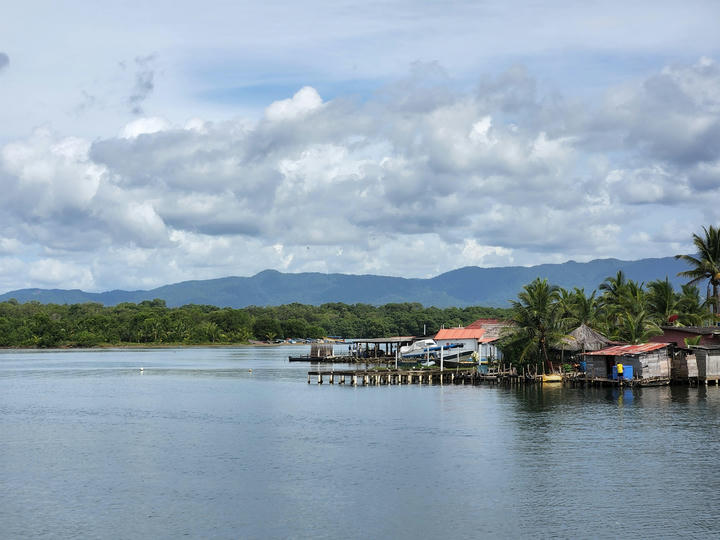
We came back the next day to Juliano shop at around 1PM. The food hadn't arrived yet, but he confirmed it would be there in a few hours, at four or five. We had time to kill in Nargana. We opted for staying in the village and hoped to test the restaurant/coffee shop place. What about a batido? The central America version of smoothie. Ahaha, how genuine! No fruit in the village means no smoothie in the little restaurant. So we wandered on the island for some time, exploring the remote end where the cell antenna was and little kids were playing soccer. The streets were more lively than the previous day and many kids gave cute hellos or shyly looked at us. When we got tired of walking, we went for drinks at the same place as the previous day in front on the dinghy dock. The Costa Rican / Panamanian grapefruit drink (Fresca or similar) that I was trying to get one last time had run out since the day before... Not that it was a basic need or anything, just another sign the stocks were getting smaller. And then, it happened...
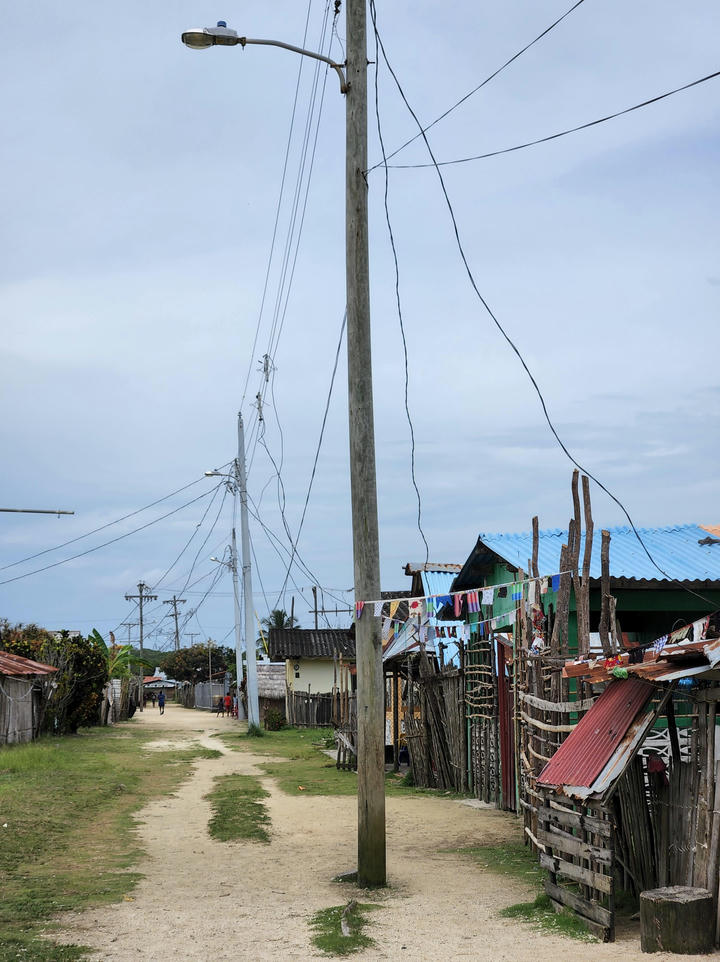
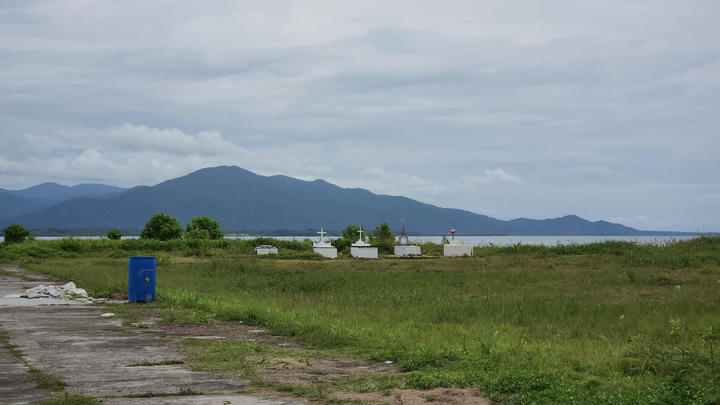
A large boat arrived and docked to the island, full of things!!! I felt an excitement I never felt before: we were not going to starve after all! And I know it sounds like an overstatement as realistically, we were not going to die at all, but yet, I felt a deep, almost animal, feeling in my belly, relief! We went to the bridge to watch the crew disembark install a table by the dock, people pour in as much as possible in a tiny village, and look at things as diverse as drinks, eggs or a mattress and a satellite dish being discharged. At that point we were persuaded that was the one delivery boat that had our vegetables in it. While seeing villagers coming forward to buy chicken, drinks, eggs or laundry detergent directly off the boat, I thought we might benefit to do the same both for time sake and financial reasons. We abandoned the idea, we liked Juliano and were happy to buy from him. The unloading was taking a long time, another green boat approached but had to leave for lack of dock space available. After a while, we started doubting that our veggies were ever going to come and decided to go check on Juliano. It turned out, on the "back of the island", he was also getting his own veggie delivery. His boat was way smaller, one of the launchas, we had seen around. Good call on Yalçın to stop waiting mesmerized at the unloading of the big boat. We walked out enough veggies to feel fully stocked for another week or two, despite the lack of variety and the still relatively high price of things - no carrots, a few tomatoes still at 2.50 dollars the pound, no milk...

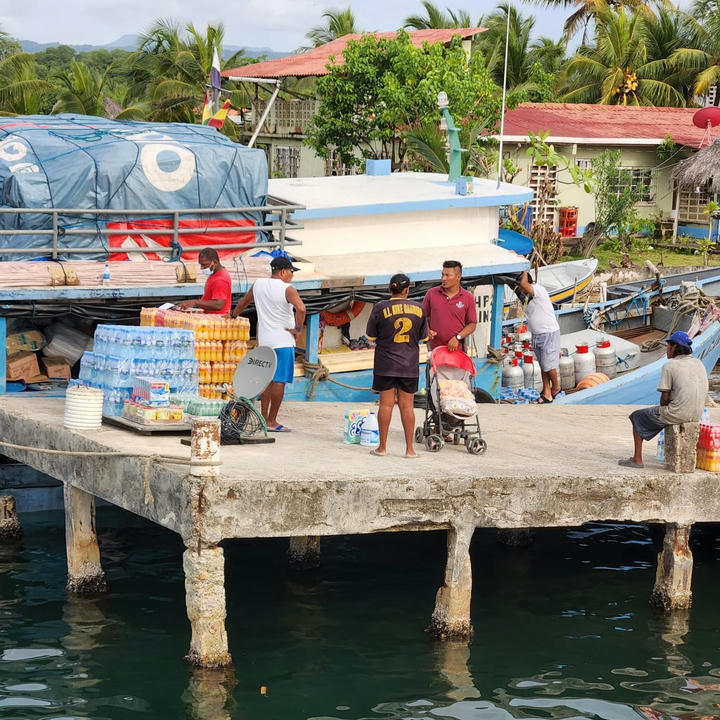
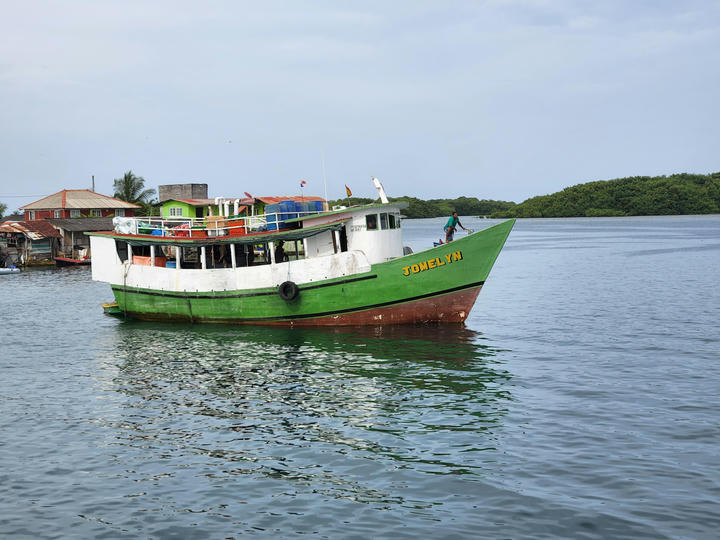
Restocking mission was accomplished! We were ready to go to the more isolated parts of San Blas. We lingered at anchorage in front of Nargana for one more night, enjoying the good internet before running out of it for possibly days on end. Overall, the little community in Nargana had won our hearts and we were more inclined not to miss the opportunity of diving deeper into the Kuna culture down the coast. Yalçın inspired by the writing of Sadun Boro about French Polynesia made us realize even more that the opportunity may not exist later down the line if we were to come back. Not many places are still isolated and genuinely friendly to cruisers on the planet anymore, better enjoying it when you are lucky enough to get the chance.
